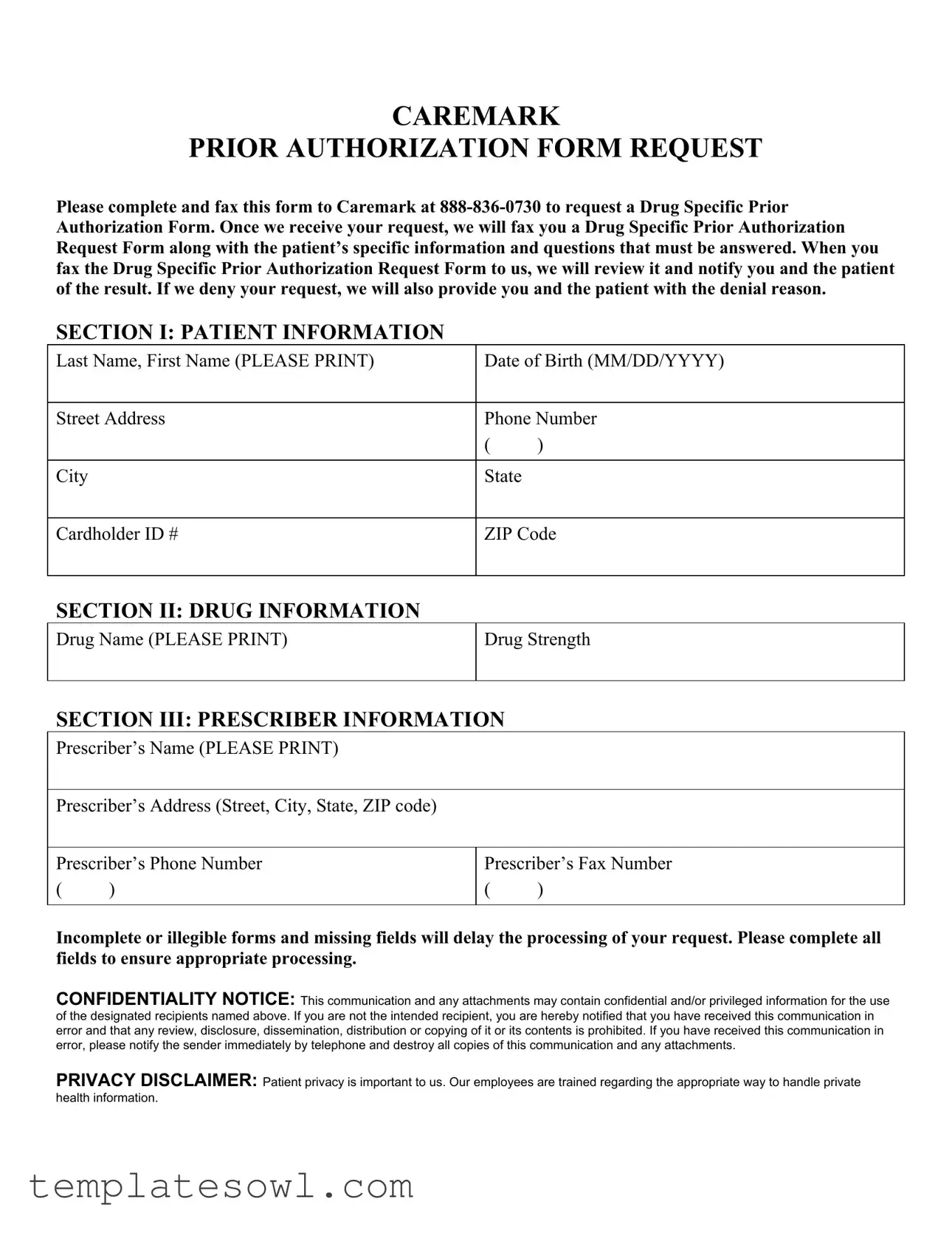What is the purpose of the CVS Prior Authorization Form?
The CVS Prior Authorization Form is designed to facilitate the approval process for certain medications. Healthcare providers must complete this form to request authorization from Caremark for specific drug treatments. This is necessary to ensure that the medication aligns with the patient's health plan and medical necessity guidelines.
How do I submit the CVS Prior Authorization Form?
To submit the CVS Prior Authorization Form, please ensure that all sections are completed accurately. Once filled out, fax the form to Caremark at 888-836-0730. After the initial submission, you will receive a Drug Specific Prior Authorization Request Form tailored to the patient’s information, which must be completed and returned for further processing.
What happens after I submit the form?
Once you submit the form, Caremark will review the provided information. You and the patient will be notified of the authorization decision. If the request is denied, Caremark will provide reasons for the denial. Timely communication can help in understanding any further steps needed.
What information is required to complete the form?
The form requires thorough information about the patient, drug details, and the prescribing physician. Key fields include the patient's name, date of birth, street address, and drug specifics. Incomplete or illegible entries could lead to delays, so it is vital to double-check all details before submission.
What should I do if I receive the form in error?
If you have received the CVS Prior Authorization Form by mistake, please notify the sender immediately by telephone and destroy any copies of the communication. This is essential to maintain the confidentiality and privacy of the information contained within the document.
How does CVS ensure patient privacy during this process?
CVS prioritizes patient privacy and has measures in place to protect private health information. Employees are trained to handle such sensitive data appropriately. By filling out this form, it is assumed that necessary safeguards around confidentiality are upheld throughout the authorization process.

